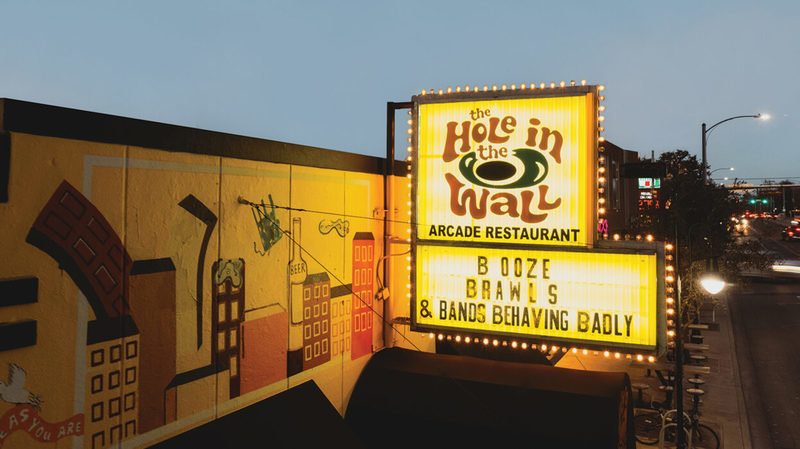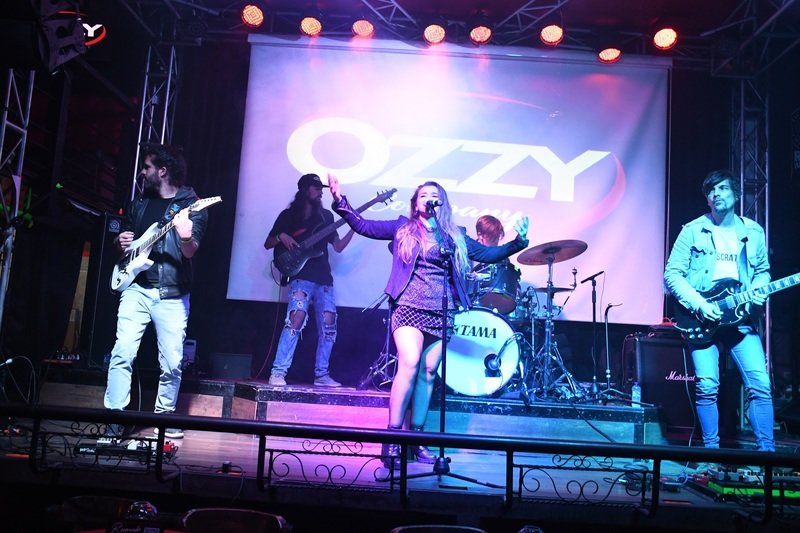
While the challenges faced by cultural organizations may seem particularly painful for the arts, these pain points — the lingering effects of the pandemic, changing audience behaviors, the cost-of-living crisis (just to name a few) — impact other sectors just as violently. Even before the pandemic and worsening still since 2020, the nightlife sector has been facing its own well-publicized crisis as venues struggle to stay open amidst rising costs and younger audiences who are trading bar-hopping for nights in with Netflix.
Changes in consumption habits mean that arts organizations have a potentially new role to play in creatively activating public spaces at night. Opportunities exist to partner with the nightlife community to activate underutilized spaces, adapt to changing audience behaviors and attract new audiences. In addition to boosting the bottom line, there is also opportunity for the arts and nightlife to work together to nurture artistic talent, an element so vital to both sectors. Working together, the arts and nightlife can not only revitalize their industries but also create sorely-needed opportunities for in-person connection as a salve for the loneliness epidemic.
To understand the changing landscape of nightlife and the opportunities it presents, we talked to four nightlife experts from across the globe:
- Carly Heath, Nighttime Advisor of Bristol, U.K.;
- Michael Rodrigues 24-Hour Economy Commissioner of Sydney, Australia;
- Brian Block, Nightlife and Entertainment Services Manager in Austin, Texas, U.S.; and
- Camilo Ospina Guzman, Vice President of the International Nightlife Association and Chairman of the Board of ASOBARES Colombia, an association dedicated to strengthening the country’s nighttime entertainment sector.
Here are some key take-aways from those conversations:
Sharing Space and Infrastructure
In the past decade, cities have started to treat nightlife as a crucial sector of the economy with distinct infrastructural, policy and cultural needs rather than simply seeing bars and clubs as minor businesses that contribute little to city life. In recognition of this shift, we have a seen a number of high-profile appointments within city governments to newly created positions of “night mayor”. At the same time, cultural organizations have not traditionally considered themselves part of this economy even though much of their programming happens at night — but they should, as there are mutual benefits to sharing space in cultural and entertainment districts.
Carly Heath pointed to an underrecognized symbiotic relationship between arts infrastructure and nightlife in Bristol (and indeed elsewhere): “Culture needs a healthy nighttime economy around it to help drive footfall, safety, and activity going on around them. They don’t live in isolation. Lots of cultural institutions use their impact on nighttime economy to make a case for funding. When they make capital investments on a building, their impact is often the nighttime economy.”
For Michael Rodrigues in Sydney, shared infrastructure and physical proximity are crucial to the success of the arts and nightlife. To give audiences the frictionless experience they are used to at home, he pointed to the importance of concentrating a variety of experiences including arts and cultural organizations, events, bars, and restaurants. This represents an evolution from districts that focused primarily on alcohol-related consumption as a core part of the nightlife experience which resulted in a concentration of clubs and bars into one area.
Austin, Texas is dealing with the challenges that come from a history of bar-centric nightlife districts like Sixth Street. As Brian Block noted, the goal is to have “more diversity of nightlife in entertainment areas to get away from clusters of bars. This is challenging from a land-use perspective because once a district has a cluster of bars, it’s hard to reverse.” However, for Block, getting arts venues and comedy clubs in the mix is crucial to diversifying experiences in nightlife districts to make them more welcoming to all. To encourage this kind of diversity in emerging arts and nightlife districts, Rally Austin, the City-sponsored economic development corporation, is taking this cultural stewardship a step further with the Austin Cultural Trust. The Trust has now preserved four key cultural nightlife venues by negotiating leases and providing other forms of support.

As space is at a premium in high-density urban areas, music venues and arts organizations alike struggle with costs associated with rent and maintenance. However, opportunities exist to share spaces, giving them life throughout the day and night. As Camilo Ospina Guzman put it, “In our venues in Colombia, we need a new meaning of ‘the bar’ or ‘the discotheque’.” This includes novel, collaborative uses for spaces. In Bogotá, a partnership between the city’s bars and the Secretary of Culture of Bogotá has resulted in bars being used for daytime cultural activities, including Zumba classes for elders, salsa lessons, and pop-up galleries.
This exchange of space should go both ways. Heath and Rodrigues both noted that large cultural institutions, like museums and performing arts centers, have valuable assets to share with local artists and nightlife communities in centrally located facilities.
Meeting Audiences Where They Are and Finding New Ones
Declines in alcohol consumption, particularly amongst young people, point to the need for nighttime activities that are less reliant on drinking culture. As Ospina Guzman put it, “Not everyone wants to party, but they want to enjoy the night.” This represents an opportunity for arts and cultural organizations to partner with nighttime economy groups to contribute to cultural activities that are already happening in nightlife districts. ASOBARES is developing a strategy called "ÁREA EN VIVO - LIVE AREA" with the Cluster of Music of the Chamber of Commerce of Bogotá, being a platform to present new and neighborhood artists.
However, nightlife has never solely been about alcohol; it revolves around community. Traditional arts organizations can also take lessons on audience building from grassroots music venues and nightlife communities. Heath noted that successful clubs and pubs alike, “develop communities around their spaces and not by people who are one-time visitors, but people who go to the same club every Friday.” The way that they do this is by that favors creativity, inclusion, and social connection, which artists are key contributors to.
When arts organizations open up their spaces to these enthusiastic audiences, artists, and creators, they invite new approaches to community-building and creativity. This requires some adjustments on the part of some cultural organizations, namely, giving up control and taking risks to allow for more creative . Heath suggested that arts anchor institutions with performance facilities could turn their spaces over to nightlife artists and organizers to program their space and invite their audiences in, learning from their methods in building community. This could help artists meet their needs for affordable space, while simultaneously bringing in the new audiences that many arts organizations need more than ever.
Centering Artists
Artists are at the heart of both vibrant, authentic nightlife experiences and cultural organizations. All the nightlife leaders interviewed noted the importance of artists to the vibrancy of their cities after dark. The success of both the arts and nightlife sectors depends on artists and the development of their talent, which often begins in small, local venues.
In Bogotá, live music was crucial to the nighttime economy’s post-pandemic revival. To ensure its health, Ospina Guzman identified a need to develop clearer, easier-to-use agreements between artists and venues. These should address copyright and licensing issues and fair pay to ensure that these relationships are mutually beneficial.
Heath sees the death of the small music venue as an existential challenge to culture, as they allow for “meeting of minds, friends, and sonic communities. If we don’t protect those spaces on a hyperlocal level, we won’t get the next genres.” She sees her role as a “gardener who creates the seedbed and hospitable environment for new creatives and new creative energy to flourish.”
No one has a silver bullet for the audience and affordability issues that both the arts and nightlife face. However, our conversations with this panel of night mayors point to possibilities of interchange between these sectors, building on the connections that already exist through artists who work in both worlds. And though the arts and nightlife sectors share problems, they also share crucial social roles in bringing people together, making cities more vibrant, and infusing daily life with creativity and joy. These shared roles also point to the potential for the sectors to join together in advocacy efforts to increase funding for both sectors, as well as the infrastructures they rely on, like transportation and public space.

